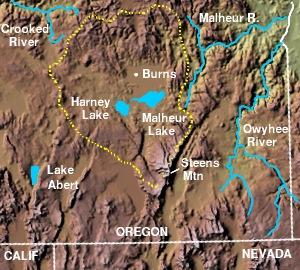I have near zero sympathy for ranchers; their business is built on exploiting public land -- land that belongs to all of us, not just to residents of one state. It's built on externalizing costs and is incompatible with ecological sustainability. Animal agriculture is going to have to go extinct the same way coal mining is, that's just the fact.
And this backgrounder is from an obviously far-right web site, take the details with salt. And the comments section is the usual hive of scum and villainy.
On the other hand, even when people's way of making a living is destructive to the ecosystem, you can't take it away without transitional plans. And I have little tolerance for overreach by federal bureaucracies or for the constant aggressive expansion of federal power into the lives of citizens. Once you understand the evils of our national drug policy -- and I mean "evils" quite literally, there are few things in this world to which that term is more accurately applied -- you never look at government power and criminal justice the same way again.
The very important takeaway here is this: two men, almost certainly over-charged as is the standard federal practice these days, already did their time as convicted and sentenced. The feds, in apparent violation of the double jeopardy and cruel and unusual punishment clauses, have decided they need to be put back in jail for more time on those same charges.
That authoritarian overreach justifies some disruptive protesting, so long as no aggressive violence is used. It is of a piece with broader concerns about criminal justice reform. It's a shame that just as this far-right website doesn't grasp that, and has a whole section dedicated to slandering and vilifying African-American victims of state violence, many progressives and folks on what's left of the American left will not get the point either.
By the 1970’s nearly all the ranches adjacent to the Blitzen Valley were purchased by the US Fish and Wildlife Service (FWS) and added to the Malheur National Wildlife Refuge. The refuge covers over 187,000 acres and stretches over 45 miles long and 37 miles wide. The expansion of the refuge grew and surrounds to the Hammond’s ranch. Being approached many times by the FWS, the Hammonds refused to sell. Other ranchers also choose not to sell.
...
(a4) By the 1990’s the Hammonds were one of the very few ranchers that still owned private property adjacent to the refuge....




